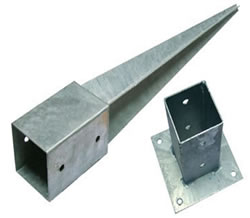Video encoding is a key parameter of high-definition network cameras, which determines the image quality of the transmitted video and the required network bandwidth. The high-definition network camera video encoding standards we currently see are mainly MJPEG and H.264. MJPEG (Motion JPEG) is a dynamic image compression technology developed on the basis of JPEG. It only compresses a certain frame independently, and basically does not consider the changes between different frames in the video stream. Through this compression technology, high-definition video images can be obtained, and the video resolution and number of compressed frames of each channel can be flexibly set, and the compressed picture can also be arbitrarily edited. But its shortcomings are also very obvious: First, the frame dropping phenomenon is serious and the real-time performance is poor. It is difficult to complete real-time compression on the premise of ensuring that each channel must be high-definition; second, the compression efficiency is low, and the transmission bandwidth and storage space take up a lot . H.264 is a new-generation video coding standard developed by the JVT Joint Video Working Group jointly established by ITU-T and ISO. It is used to achieve the goals of high video compression ratio, high image quality, and good network adaptability. H.264 not only saves more than 80% bit rate than MJPEG, but also has better support for network transmission. H.264 introduces an encoding mechanism for IP packets, which is conducive to packet transmission in the network, supports streaming media transmission of video in the network, and supports hierarchical encoding transmission under different network resources, so as to obtain stable image quality. H.264 can achieve 720p, 1080i / p broadcast-grade high-definition video resolution at a lower bandwidth. Although MJPEG can get better single image quality, but because of its fatal flaws in terms of mobility, bandwidth occupation and storage space occupation, H.264 will inevitably be the main focus of high-definition network cameras in the future.
Post Anchors we exported include Ground Spikes(steel clamp), pole ground plate(bolt bown), U-clamp, U-head with bend sides, H-clamp, T-form support, VP-plates, Y-form reinforced support, Y-form variable with bolt, U-clamp, U-support, Mini-support and post cap. There are kinds of types to show post anchors to customers and also can do some drawings of post anchors according to your requirements. The main product of post anchors is ground spike, which is widely used in fence, outdoor-letterbox, small wooden house, small wooden buildings and carports. The surface treatment is hot dipped galvanized, electronic galvanized and powder coated.
Ground spikes are used to support wooden house as foundation and there are many types of Post Anchor for building and construction. These anchors can support and protect wood or other supports so that the base is good for supporting the buildings. The length of ground spikes is 500-900mm and the size of the top of ground spike is from 46x46mm to 145x145mm. And the color of Ground Anchors is red, silvery, green, black and so on. We will produce the suited post anchors to you according to your need in length, color, material and shape of the top. Ground spikes often used in fence projects, small wooden house, home umbrellas supporting and so on.
Post Anchor Post Anchors, Ground Spikes, Ground Anchors,Post Anchor Hebei Honde Industrial Trade Imp&Exp Co., Ltd. , https://www.groundscrewpile.com

Who will dominate the video encoding of high-definition network cameras, MJPEG and H.264?